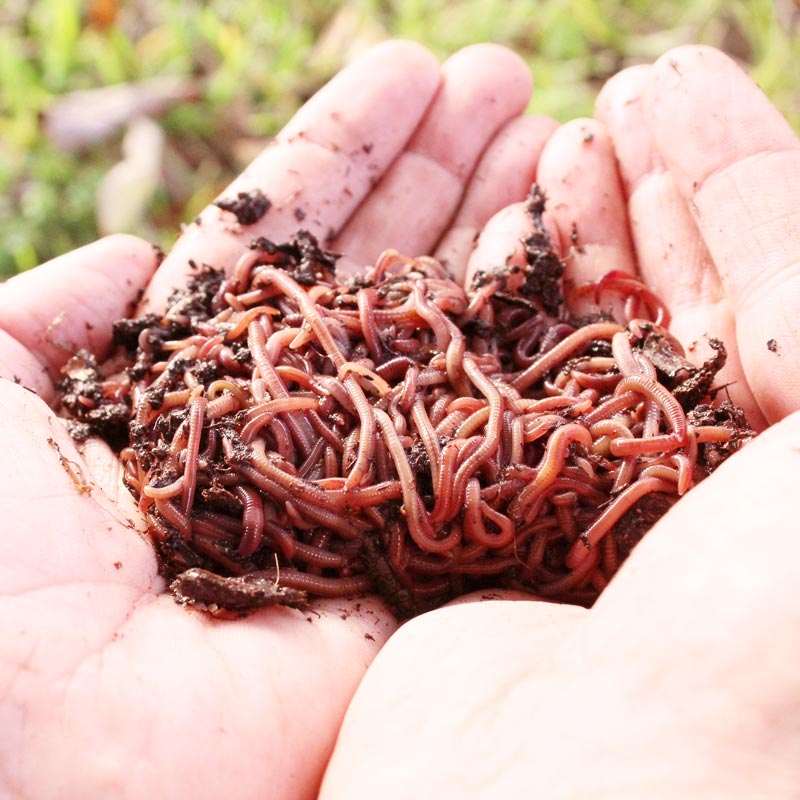Red Wiggler Worms Demystified: Opening the Tricks of Vermiculture for Greener Living and Nutrient-Rich Soil
In the realm of lasting methods for enriching dirt top quality and advertising eco-conscious living, red wiggler worms play a pivotal yet commonly overlooked duty. These simple creatures have the exceptional ability to change natural waste right into nutrient-rich castings that work as a potent natural fertilizer. By diving into the globe of vermiculture, one can discover a wide variety of advantages that prolong far beyond typical composting techniques. Understanding the intricacies of looking after these worms, enhancing their setting, and utilizing their spreadings can bring about a greener way of life and healthier soil for plants to thrive.
The Duty of Red Wiggler Worms
Red Wiggler worms play a crucial function in composting systems by efficiently breaking down raw material into nutrient-rich castings. These ravenous eaters eat a selection of organic products, such as kitchen area scraps, lawn waste, and paper products. As they feed, the worms' digestive procedures damage down the raw material into a fine, dark, and nutrient-dense material called worm spreadings or vermicompost.
The spreadings generated by Red Wiggler worms are very useful for dirt health and wellness and plant development. They are rich in vital nutrients like phosphorus, potassium, and nitrogen, which are important for supporting healthy and balanced plant growth. In addition, worm spreadings have helpful microorganisms and enzymes that assist improve soil structure, increase water retention, and improve nutrient uptake by plants.
Benefits of Vermicomposting

It enhances dirt structure, boosts dirt oygenation, and raises dirt wetness retention. Vermicompost also enhances the dirt with vital nutrients like potassium, phosphorus, and nitrogen, promoting plant development and overall soil fertility.
Additionally, vermicomposting assistances lasting gardening techniques by offering a chemical-free and natural choice to artificial fertilizers. Red Wiggler Worms. This eco friendly approach not only enriches the dirt yet additionally helps in reducing reliance on unsafe chemicals, advertising a greener and much more sustainable way of horticulture
Setting Up a Worm Container
When establishing a worm container for vermicomposting, appropriate configuration is vital to make certain the success of the composting procedure. The very first step in setting up a worm bin is picking an ideal container.
After adding the bedding, introduce the red wiggler worms to the bin. The worms ought to then be given with food scraps such as fruit and vegetable peels, coffee premises, and eggshells.
Consistently keep an eye on the wetness degrees and temperature in the worm bin to ensure optimal conditions for the worms. With proper configuration and upkeep, the worm container will properly transform organic waste right into nutrient-rich garden compost for your plants and yard.
Gathering Worm Spreadings
To efficiently gather nutrient-rich worm spreadings from your vermicomposting system, a methodical harvesting technique is important. When it comes time to collect the worm these details castings, there are a couple of key steps to comply with to guarantee a successful procedure.

Troubleshooting Common Issues
Determining and attending to typical challenges that might emerge throughout the vermicomposting procedure is critical for maintaining a healthy and effective worm bin. Adding excess food scraps can lead to a build-up of moisture and level of acidity in the worm container, potentially damaging the worms. Another problem is undesirable smells originating from the worm bin.
Additionally, if the worm populace is decreasing or the worms show up undesirable, maybe due to ecological stress factors such as extreme temperatures or pH degrees. Checking these factors and making essential adjustments is important for the wellness of the worms. By fixing these typical concerns promptly, vermicomposters can make sure a successful and smooth vermicomposting process while preserving a thriving worm population.

Conclusion
In final thought, red wiggler worms play a crucial role in vermiculture by breaking down organic matter into nutrient-rich dirt. Establishing up a worm bin is vital for successful vermiculture, and gathering worm castings provides useful garden compost for horticulture.
As they feed, the worms' digestion processes break down the organic matter into a penalty, dark, and nutrient-dense product known as worm castings or vermicompost.
The spreadings created by Red Wiggler worms are very valuable for soil wellness and plant growth. Including excess food scraps can lead to a buildup of dampness and acidity in the worm container, potentially discover here hurting the worms.In addition, if the worm population is decreasing or the worms appear unhealthy, it could be due to environmental stress factors such as extreme temperature levels or pH degrees. Establishing up a worm bin is vital for successful vermiculture, and harvesting worm spreadings gives important garden compost for horticulture.
Comments on “Organic Composting with Red Wiggler Worms - Increase Your Yard's Growth”